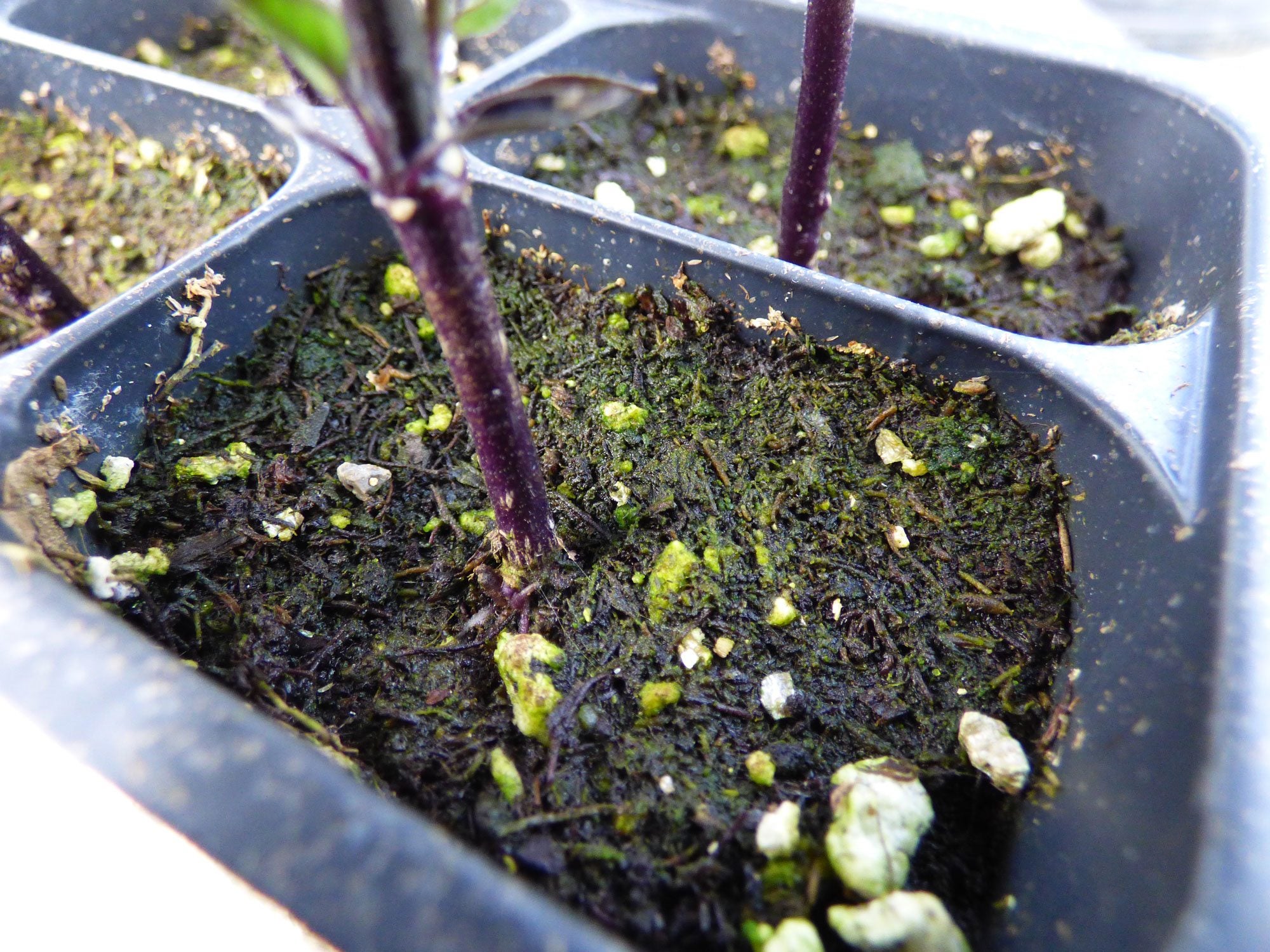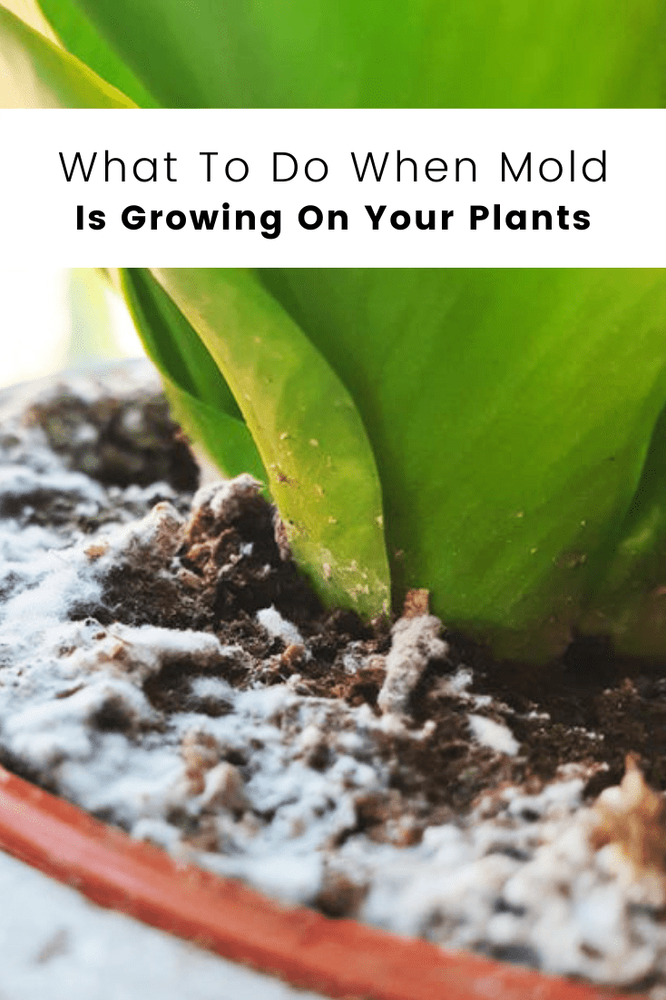To deal with green mold on seedling soil, increase air circulation and reduce soil moisture. Remove affected soil and use a fungicide if necessary.
Green mold on seedling soil is a common issue for gardeners. It usually appears due to excessive moisture and poor air circulation. Mold can stunt seedling growth and lead to other problems. Ensuring proper drainage and watering practices can help prevent mold.
Use a fan to improve airflow around the seedlings. Avoid overwatering and let the soil dry out between waterings. Sterilize tools and pots to minimize contamination. Regularly inspect seedlings for any signs of mold and act quickly. A fungicide may be used as a last resort to combat persistent mold issues. Keeping these practices in mind can help maintain healthy seedlings.

Credit: www.gardeningknowhow.com
Identifying Green Mold
Green mold on seedling soil is a common problem. It can affect plant health and growth. Knowing how to identify it is the first step in solving the issue.
Signs Of Mold
Spotting green mold early helps in managing it effectively. Here are some signs of mold on seedling soil:
- Green patches on the soil surface
- Musty or earthy odor
- Seedlings showing signs of stress
- Discoloration of leaves and stems
If you see any of these signs, your soil might have green mold.
Common Causes
Understanding the common causes of green mold can help prevent it:
| Cause | Description |
|---|---|
| Overwatering | Too much water creates a damp environment for mold. |
| Poor Air Circulation | Lack of airflow encourages mold growth. |
| Contaminated Soil | Using soil that already contains mold spores. |
| High Humidity | Moist conditions are ideal for mold development. |
By addressing these causes, you can reduce the risk of green mold.
Immediate Actions
Green mold on seedling soil can harm your young plants. Taking immediate actions is crucial to save your seedlings. Here are some steps you can take right away.
Isolating Affected Seedlings
First, move the affected seedlings away from healthy ones. This stops the mold from spreading. Use clean hands or tools to avoid cross-contamination. Place the isolated plants in a different room or area. Ensure the new spot has good air circulation. This helps prevent mold from growing further.
Removing Contaminated Soil
Next, remove the contaminated soil carefully. Use a small spoon or scoop to take out the top layer of soil. Dispose of this soil in a sealed bag. Replace it with fresh, sterile soil. Make sure the new soil is dry and well-draining.
Here’s a quick guide to help:
- Wear gloves to protect your hands.
- Use clean tools to avoid spreading mold.
- Seal the contaminated soil in a bag.
- Replace with fresh, dry soil.
These immediate actions can save your seedlings. Keep a close watch on them for any new signs of mold. Always maintain good air circulation and avoid overwatering.
Natural Remedies
Green mold on seedling soil can be a gardener’s nightmare. Thankfully, there are natural remedies that can help. These remedies are safe for your seedlings and the environment. Below are some effective methods.
Using Cinnamon
Cinnamon is not just a spice; it’s a powerful antifungal agent. Sprinkle a fine layer of cinnamon on the soil surface.
- Sprinkle a fine layer of cinnamon over the soil.
- Wait for a few days to see the results.
- Repeat the process if mold persists.
Cinnamon helps to kill the mold and prevent it from coming back.
Applying Baking Soda
Baking soda is another natural mold killer. It is effective and easy to use. Follow these steps:
- Mix one tablespoon of baking soda with one liter of water.
- Pour the mixture into a spray bottle.
- Spray the solution lightly over the moldy soil.
- Wait for a few days and observe the changes.
Baking soda changes the pH level, making it hard for mold to grow.
Chemical Solutions
Green mold on seedling soil can be a real problem. Using chemical solutions is one way to tackle it effectively. This section will guide you through safe fungicides and proper application methods.
Safe Fungicides
Using safe fungicides is crucial to protect your seedlings. Choose fungicides labeled for seedling use. Here are some options:
- Copper-based fungicides
- Neem oil
- Potassium bicarbonate
These fungicides help control mold without harming your plants. Always read the label before use.
Proper Application Methods
Applying fungicides properly ensures they work effectively. Follow these steps:
- Mix the fungicide according to the label instructions.
- Use a spray bottle for even coverage.
- Spray the soil surface, not the seedlings.
- Apply in the early morning or late afternoon.
- Repeat the application as recommended.
Proper application helps keep mold at bay and protects your seedlings.
Preventive Measures
Dealing with green mold on seedling soil can be challenging. Implementing preventive measures is crucial. Follow these steps to keep your seedlings healthy and mold-free.
Improving Soil Drainage
Proper soil drainage prevents water buildup, which is a breeding ground for mold. Use a well-draining soil mix. Ensure your pots have drainage holes. This helps water escape and keeps roots healthy.
- Mix soil with sand or perlite.
- Use pots with multiple drainage holes.
- Avoid overwatering your seedlings.
Regulating Humidity Levels
High humidity levels encourage mold growth. Keep humidity within safe limits. Use a humidity meter to monitor levels. Maintain a balance to support seedlings but deter mold.
| Humidity Level | Action |
|---|---|
| Above 70% | Increase ventilation |
| 50%-70% | Ideal range |
| Below 50% | Use a humidifier |
- Place a fan near the seedlings.
- Avoid covering seedlings too tightly.
- Water seedlings in the morning.
Follow these steps to keep your seedlings healthy and mold-free.

Credit: www.ultimatemoldcrew.ca
Healthy Seedling Practices
Adopting healthy seedling practices is essential for preventing green mold on seedling soil. These practices ensure your seedlings grow strong and healthy.
Proper Watering Techniques
Watering your seedlings correctly is crucial. Overwatering can cause green mold. Use a spray bottle to mist the soil lightly. Avoid soaking the soil. Ensure the top layer dries out between waterings.
- Use a spray bottle for gentle misting.
- Let the top layer dry between waterings.
- Don’t soak the soil.
Ensuring Adequate Light
Seedlings need enough light to thrive. Insufficient light can cause mold. Place your seedlings near a sunny window.
If natural light is not enough, use grow lights. Position the lights about 2-3 inches above the seedlings.
| Light Source | Duration | Distance |
|---|---|---|
| Natural Sunlight | 6-8 hours daily | Near window |
| Grow Lights | 12-16 hours daily | 2-3 inches above |
Rotate your seedlings daily for even light exposure. This practice prevents mold and promotes even growth.
Long-term Strategies
Green mold on seedling soil can be a persistent issue. Implementing long-term strategies ensures your seedlings stay healthy and mold-free. These strategies involve using sterilized equipment and choosing resistant seed varieties.
Using Sterilized Equipment
Always use sterilized equipment when handling seedlings. Dirty tools can introduce mold spores to the soil. Sterilize your tools by soaking them in a bleach solution. Use a ratio of 1 part bleach to 9 parts water.
Follow this table for a quick reference:
| Equipment | Sterilization Method |
|---|---|
| Pruning Shears | Soak in bleach solution for 10 minutes |
| Planting Trays | Scrub with bleach solution |
| Watering Cans | Rinse with bleach solution |
After sterilizing, rinse tools with clean water. Dry them thoroughly before use.
Choosing Resistant Seed Varieties
Selecting resistant seed varieties can prevent green mold growth. Some seeds are bred to resist mold and fungi. These seeds have a natural defense against mold spores.
Here are some resistant seed varieties:
- Tomatoes
- Peppers
- Cucumbers
Research your specific plant types. Choose varieties known for their mold resistance.
Using sterilized equipment and resistant seeds ensures healthy seedlings. These long-term strategies keep green mold at bay.
Monitoring And Maintenance
Keeping a close eye on your seedlings is crucial. Regular monitoring and proper maintenance help prevent green mold. This section provides essential tips for keeping your seedlings healthy.
Regular Inspections
Inspect your seedlings daily. Look for signs of green mold. Check the soil surface and around the base of the seedlings.
- Check for any discolored patches.
- Look under the leaves for mold.
- Ensure the soil is not overly moist.
Regular inspections help catch mold early. Early detection makes it easier to treat.
Documenting Growth Progress
Document your seedlings’ growth. Keep a record of their progress. This helps identify any changes or issues quickly.
| Date | Seedling Height | Soil Condition | Notes |
|---|---|---|---|
| 01/01/2023 | 2 cm | Dry | Healthy |
| 01/08/2023 | 4 cm | Slightly moist | Healthy |
| 01/15/2023 | 5 cm | Wet | Green mold spotted |
Use the table to track changes. Note any signs of mold. Adjust care methods based on your observations.

Credit: homesteadandchill.com
Frequently Asked Questions
What Causes Green Mold On Seedling Soil?
Green mold on seedling soil is typically caused by excess moisture and poor ventilation. Overwatering and lack of airflow create an environment for mold to thrive. Ensure proper drainage and air circulation to prevent it.
Is Green Mold Harmful To Seedlings?
Yes, green mold can harm seedlings by competing for nutrients and causing root rot. It can stunt growth and even kill young plants. Address mold issues promptly to protect your seedlings.
How Do I Remove Green Mold From Soil?
Remove green mold by gently scraping it off the soil surface. Improve air circulation and reduce watering frequency. Consider using a natural antifungal solution like diluted hydrogen peroxide.
Can Green Mold Spread To Other Plants?
Yes, green mold can spread to other plants if not controlled. Mold spores can be airborne or transferred via water. Isolate affected seedlings and maintain good hygiene to prevent spreading.
Conclusion
Managing green mold on seedling soil is crucial for healthy plant growth. Regularly inspect and maintain your seedlings. Use proper watering techniques to prevent mold. Ensure adequate airflow around your plants. Apply natural remedies or fungicides if necessary. With these steps, your seedlings will thrive and remain mold-free.
